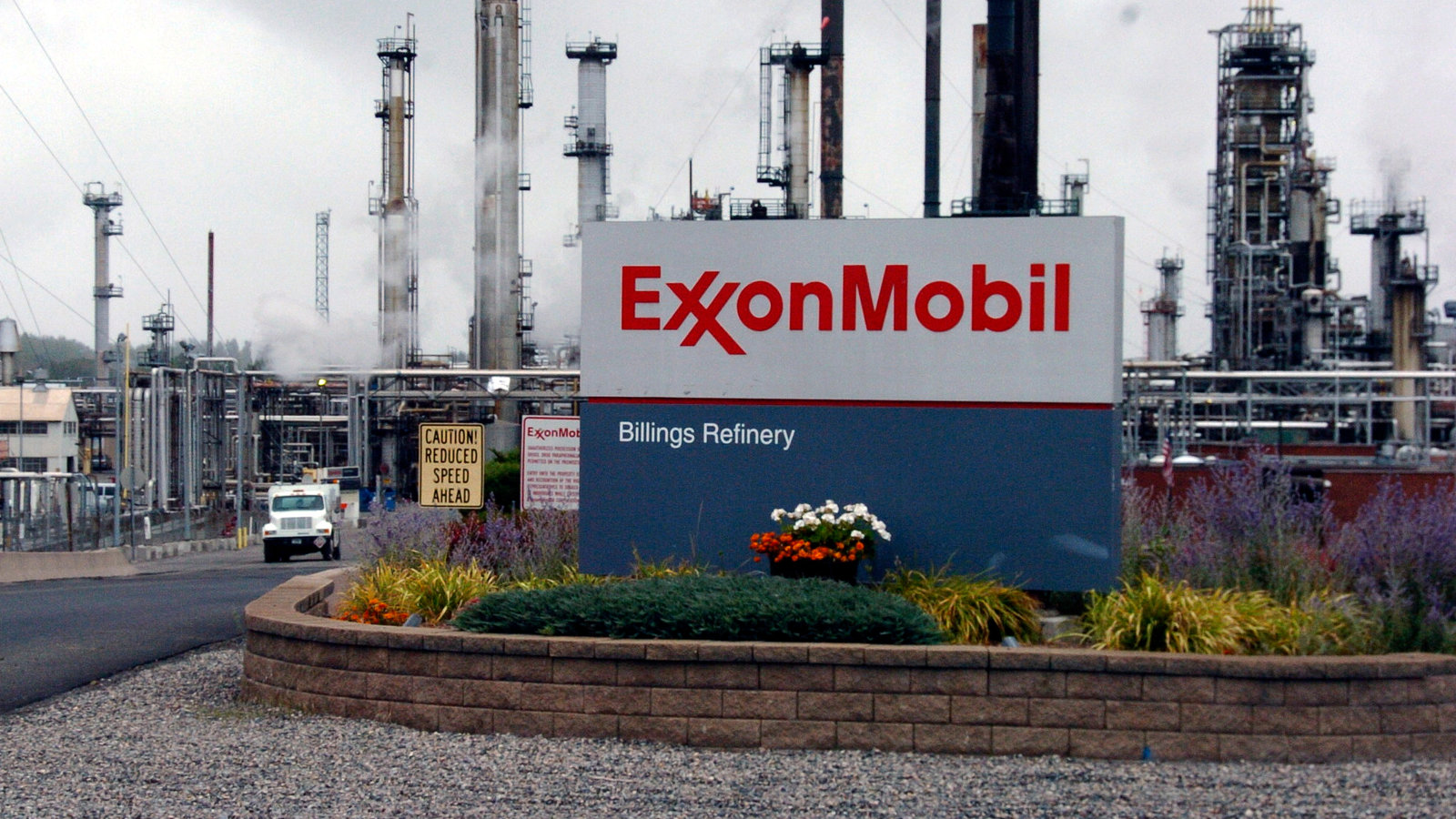ExxonMobil Corporation is a multinational oil and gas corporation that is headquartered in Irving, Texas, USA. The company is considered one of the largest publicly traded energy companies in the world, and it operates in various parts of the globe, with its operations spanning over six continents.
ExxonMobil was formed in 1999 through the merger of Exxon Corporation and Mobil Corporation. The merger resulted in the creation of a company with a market value of $271 billion, making it the largest merger in history at the time. Today, ExxonMobil has a market value of around $230 billion, with revenues exceeding $190 billion as of 2021.
The company’s primary business is the exploration, production, refining, and distribution of oil, gas, and petrochemicals. It has a vast network of oil and gas reserves, with proven reserves of approximately 23.3 billion oil-equivalent barrels, making it one of the world’s largest oil and gas companies. The company’s upstream operations span across various parts of the world, including North America, South America, Europe, Africa, Asia, and the Middle East.
ExxonMobil also has a significant downstream business, which includes the refining, marketing, and distribution of petroleum products. The company operates 20 refineries globally, with a combined capacity of 4.8 million barrels per day, making it one of the largest refining companies in the world. Additionally, the company has over 14,000 retail stations in more than 70 countries, making it one of the largest global marketers of petroleum products.
ExxonMobil has a significant research and development (R&D) program, with an annual R&D budget of around $1 billion. The company’s R&D efforts focus on various areas, including energy efficiency, carbon capture, and storage, advanced materials, and biofuels.
In recent years, ExxonMobil has faced several challenges, including declining oil prices, increased competition, and pressure from stakeholders to reduce its carbon footprint. The company has responded to these challenges by investing in renewable energy, exploring low-carbon technologies, and reducing its greenhouse gas emissions. As part of its sustainability efforts, ExxonMobil has set a goal of reducing its carbon intensity by 15-20% by 2025.
In conclusion, ExxonMobil Corporation is one of the largest oil and gas companies in the world, with operations spanning across various continents. The company has a vast network of oil and gas reserves, a significant downstream business, and a significant R&D program. While facing challenges from changing market conditions and pressure from stakeholders to reduce its carbon footprint, ExxonMobil has continued to invest in renewable energy and low-carbon technologies, demonstrating its commitment to sustainability.
History of Exxon Mobil
ExxonMobil Corporation has a long and storied history that dates back to the 19th century. The company’s history is a tale of growth, mergers, and acquisitions that has transformed it into the multinational corporation it is today. Let’s take a closer look at ExxonMobil’s history-.
Early Beginnings
ExxonMobil’s roots can be traced back to the founding of Vaccum Oil Company. Vacuum Oil Company was an American oil company known for its Gargoyle 600-W steam cylinder motor oil. After being taken over by the original Standard Oil Company and then becoming independent again, in 1931 Vacuum Oil merged with the Standard Oil Company of New York to form Socony-Vacuum, later renamed to Mobil and eventually merging with Standard Oil of New Jersey (itself renamed to Exxon) to form ExxonMobil in 1999.

Standard Oil was primarily engaged in the refining and marketing of petroleum products and controlled around 90% of the oil refining business in the United States. Standard Oil’s monopoly status led to its eventual breakup by the U.S. Supreme Court in 1911.
Two of the companies that emerged from the breakup were Standard Oil of New Jersey (later known as Exxon) and Standard Oil of New York (later known as Mobil). Both companies grew rapidly during the early 20th century, with Exxon expanding its operations to various parts of the world, including Asia, Europe, and Africa, while Mobil focused primarily on the Middle East.
Merger of Exxon and Mobil
In 1999, Exxon and Mobil announced a merger that would create the world’s largest publicly traded energy company at the time. The merger was valued at $81 billion and resulted in the formation of Exxon Mobil Corporation.
The merger created a company with a market value of $271 billion, making it the largest merger in history at the time. Today, Exxon Mobil has a market value of around $230 billion, with revenues exceeding $190 billion as of 2021.
ExxonMobil today
ExxonMobil’s primary business is the exploration, production, refining, and distribution of oil, gas, and petrochemicals. The company has a vast network of oil and gas reserves, with proven reserves of approximately 23.3 billion oil-equivalent barrels, making it one of the world’s largest oil and gas companies.
The company’s upstream operations span across various parts of the world, including North America, South America, Europe, Africa, Asia, and the Middle East. Additionally, the company operates 20 refineries globally, with a combined capacity of 4.8 million barrels per day, making it one of the largest refining companies in the world. ExxonMobil also has over 14,000 retail stations in more than 70 countries, making it one of the largest global marketers of petroleum products.
How big is ExxonMobil?
ExxonMobil is one of the largest multinational corporations in the world, with significant influence in the energy sector. Founded in 1999 through the merger of Exxon and Mobil, the company has operations in over 50 countries and is involved in a range of energy-related activities, including exploration, production, refining, and marketing of petroleum products.
Here are some key facts and figures that help illustrate just how big ExxonMobil is:
Revenue: In 2021, ExxonMobil reported total revenue of $183.5 billion. This makes it one of the largest companies in the world in terms of revenue.
Market Capitalization: As of March 2023, ExxonMobil had a market capitalization of over $238 billion. This is a measure of the company’s total value on the stock market and is a reflection of the high level of investor interest in the company.
Employees: ExxonMobil has over 72,000 employees worldwide, according to its most recent annual report. This includes both full-time and part-time workers in a range of roles, from engineers and scientists to sales and marketing professionals.
Oil and Gas Reserves: ExxonMobil is one of the largest producers of oil and gas in the world. As of the end of 2020, the company had proven reserves of 15.3 billion barrels of oil equivalent. This includes both crude oil and natural gas, as well as other energy resources like coal and tar sands.
Refining Capacity: ExxonMobil operates a number of refineries around the world, which are used to process crude oil into a range of petroleum products like gasoline, diesel fuel, and jet fuel. The company has a total refining capacity of over 4.5 million barrels per day.
Marketing: In addition to producing and refining petroleum products, ExxonMobil is also involved in marketing and distributing these products around the world. The company has a global network of over 20,000 retail sites, including gas stations and convenience stores.
Environmental Impact: As one of the largest producers of fossil fuels in the world, ExxonMobil has faced criticism for its environmental impact. The company has been accused of contributing to climate change through its emissions of greenhouse gases, and has also been implicated in a number of oil spills and other environmental disasters.
Overall, ExxonMobil’s size and influence in the energy sector are difficult to overstate. As a major producer, refiner, and marketer of petroleum products, the company plays a key role in shaping the global energy landscape. However, its impact on the environment and role in climate change have also made it a controversial and divisive player in the world of business and politics.
Also Read: Chevron Corp – The Energy Giant Like No Other
Is ExxonMobil too big to fail?
ExxonMobil is a large multinational corporation with significant influence in the oil and gas industry. However, whether or not it is too big to fail is a matter of debate and interpretation.
In general, the concept of “too big to fail” refers to companies or institutions that are considered so large and interconnected with the broader economy that their failure would have disastrous consequences for the financial system as a whole. This concept gained prominence during the 2008 financial crisis, when several large banks and financial institutions were bailed out by the government to prevent their collapse from causing widespread economic damage.
ExxonMobil, as an oil and gas company, does not have the same level of systemic risk as financial institutions. While its failure could have significant economic and environmental consequences, it is not likely to trigger a global financial crisis in the same way that the collapse of a major bank would.
That being said, ExxonMobil is a major player in the energy industry and its failure could have ripple effects throughout the economy. Additionally, the company has significant political influence and has faced criticism for its role in contributing to climate change. Whether or not the government would bail out ExxonMobil in the event of a major crisis is uncertain and would likely depend on a variety of factors, including the severity of the crisis and the political climate at the time.
Controversies Surrounding ExxonMobil
Exxonmobil has been at the center of a number of controversies over the years. Here are some of the most significant controversies surrounding the company:
Climate Change: ExxonMobil has been accused of downplaying the risks of climate change and misleading the public and investors about the company’s role in contributing to greenhouse gas emissions. In 2015, investigations by InsideClimate News and the Los Angeles Times revealed that ExxonMobil had conducted its own research on climate change as early as the 1970s, but had publicly denied the existence of climate change for many years.
Oil Spills and Environmental Disasters: ExxonMobil has been implicated in a number of oil spills and other environmental disasters over the years. Perhaps the most well-known example is the Exxon Valdez oil spill in 1989, which dumped over 11 million gallons of crude oil into the Prince William Sound in Alaska. More recently, the company has been criticized for its handling of an oil spill in Mayflower, Arkansas in 2013, which resulted in the evacuation of hundreds of residents.
Human Rights Violations: ExxonMobil has been accused of complicity in human rights violations in a number of countries where it operates. In Indonesia, for example, the company has been accused of supporting the military dictatorship in East Timor in the 1990s and failing to prevent human rights abuses committed by Indonesian security forces.
Lobbying and Political Influence: Like many large corporations, ExxonMobil has significant political influence and engages in lobbying activities to shape public policy. The company has been criticized for its lobbying efforts in the United States and other countries, particularly around climate change policy.
Safety Violations: ExxonMobil has faced criticism for its safety record in a number of its operations. In 2005, for example, an explosion at the company’s refinery in Texas City, Texas killed 15 workers and injured over 100 others. The company was fined by the U.S. Occupational Safety and Health Administration for safety violations in the aftermath of the explosion.
These are just a few of the controversies surrounding ExxonMobil over the years. As one of the largest and most influential corporations in the world, the company’s actions and policies are closely scrutinized by a range of stakeholders, including environmental activists, investors, and government regulators.



